Starship Weaponry
- 1 Introduction
- 2.1 Types of Phasers:
- 3.1 Differences:
- 4.1 Firing Modes:
- 4.2 Types of Torpedo:
- 4.3 General Components of Torpedoes:
- 5.1 Launcher Components/Sections:
- 5.2.1 Micro Torpedoes
- 6 Plasma Torpedoes

Introduction
Please note: This paper does not represent the official Star Trek canon on starship weaponry. However, this is official, Federation Space, weapons specification canon.
Phasers General:
Phasers, short for Phased Energy Rectification Device, are easily the most commonly used weapons throughout the known galaxy. Variations of the Phaser are installed on warships of all major races in the galaxy. Though there are variations, all Phasers can be grouped into four types.
Types of Phasers:
- Type I Phaser (Offensive): The most powerful, ship mounted, Phaser, it’s the standard main Phaser for the Federation, Romulans, Gorn, Cardassian, and Tholian militaries.
- Type II Phaser (Offensive/Defensive): Less powerful than the Type I, the Type II requires roughly half the power. Designed by the Klingons (and stolen by the Mirak) to counteract the missile threat of the Mirak, the Type II became the all-purpose standard for the Imperial Klingon Navy. Not long after, the Type II began appearing on Mirak vessels. The Type II Phaser is used almost exclusively by the Klingon and Mirak Navies, though it’s not uncommon to find them mounted on Orion pirate ships.
- Type III Phaser (Defensive): The Type III Phaser has come into wide spread use with the introduction of fighters and has become part of the defensive weapons of most starships. The Type III only requires ¼ the power of a Type one Phaser, allowing continuous rapid-fire against targets. Though they were designed to destroy enemy torpedoes and small craft, they have found other uses as well.
- Type IV Phaser (Heavy): This huge Phaser is only mounted on large bases and occasionally planetary defense grids. Two or three blasts from a Type IV Phaser could easily destroy a heavy cruiser sized ship.
- Phaser-G (Gatling): A newer design first implemented aboard the Defiant-class, the Phaser-G is a multi-purpose Pulse-Phaser than can fire with the destructive potential equal to a standard Type I Phaser. In trial tests, the Phaser-G has proven successful as both and offensive and defensive solution. Some Gatling Phasers have been "spiked" to allow them to fire at an increased rate, but this depletes the power cells faster and shortens the operational lifespan of the emitter due to the extreme temperatures involved. The Gatling Phaser is currently standard armament on Star Fleet Fighters , Federation-class Carriers and the Cicero-class Support Escort.
Phasers on Star Fleet ships/installations:
While the concept has remained the same, the delivery method of Phasers have changed significantly over the centuries, ranging from cannon type devices as seen on the Enterprise NX-01 and USS Defiant, to banks found on late 23nd century starships such as the Miranda class and Excelsior class starships, to arrays found on many late 24 century starships such as the Galaxy class and Sovereign class. Currently, in the 25th century, technological updates and necessity have brought Star Fleet back to the use of banks.
Differences:
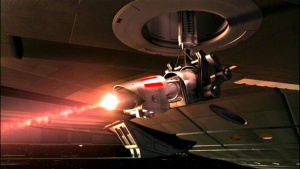
- Phaser cannons: The technology for this has been around for centuries. In its infancy, Phaser cannons were used primarily because technology hadn’t developed enough to downsize the device. However, as technology increased, and parts were downsized and made to handle power loads more efficiently for their size, Phaser cannons saw a brief comeback. These were seen on the Defiant class starships. Phaser cannons on the Defiant-class (Pulse Phaser Cannons) saw use because of the sheer amount of energy that could be channeled to them because of the modern day size of the components, a pulse was required however to allow the cooling systems to prevail and prevent immediate burnout of the cannons. The configuration and layout of internal power distribution of the ship itself allowed this use of this technology, and is still impractical on standard Star Fleet design methods due to the limited firing arc and the power requirements.
In extreme cases a photon launcher system on a starship can be completely rebuilt to house a Phaser cannon, but due to shutting down a torpedo launcher, practicality, and the power load/drain required, use is not common.
- Phaser banks: Phaser banks are a group of Phaser emitters grouped together into one centralized location. They share a common power source, the warp core, but separate power relays and recharge unit. Normally multiple emitters are fired simultaneously giving the illusion of 1 Phaser strike. While firing emitters simultaneously allows more firepower to be delivered, the setback is those emitters would be out of use while they recharged. While still commonly used on more dated starships for a longer period of time, overall incorporation of it into newer class starships was abandoned for nearly 100 years after the invention of the Phaser array, but has found use once again.
- Phaser arrays: This technology was largely seen in the latter half of the 24th century on such ships as the Galaxy -class, Intrepid-class, Sovereign-class ship to name a few, all the way up until the first General War. Phaser arrays allow the power to be channelled and released anywhere along the array, and in some cases at multiple points at the same time; this however had the effect of requiring twice the power drain. The benefits of the Phaser arrays were that this technology allowed a much larger firing arc than just one bank. Another befit was that the focal point of the energy could be shifted along the Phaser bank which allowed the release of the energy at different points without compromising the size of the Phaser arc; this prevented anyone section from experience component burnout. The downfalls of this technology were discovered during the first general war where enemy ships would focus their fire on to the Phaser array. Because the technology is dependent on a large section of the array to be operational, this allowed a much larger target area to disable that section of the array; also of this, one well-placed hit could potentially disable two sections rather than just one. Another setback to this technology was that the whole array had to be of the same type; with the additional space taken up by the arrays, having multiple types of arrays in one section was impractical. Additionally the recharge time was dependant on the whole section of the array rather than one emitter.
Torpedoes General:
The standard heavy weapon of Federation Starships, variations of the photon torpedo have existed since the beginning of the Federation. (The terms photon and quantum torpedoes are interchangeable for this discussion.) It is also rumored that photon launchers have been installed on some Tholian ships, but those rumors have not been substantiated. There are three firing modes for this weapon.
Firing Modes:
- Standard: A standard photon torpedo requires roughly four times the energy of a Phaser I. Unlike many heavy weapons, the photon torpedo does not lose energy as it travels to its target. However, the longer the range, the more difficult it becomes to strike the target.
- Overload: Overload: The overloaded torpedo is one that has been programmed to allow a higher destructive yield than its normal setting; the yield depending on the settings programmed may be potentially double. This is done by programming the various internal components to become inactive and/or require less power generated through the matter/anti-matter reaction within the tube once it is armed. This allows more matter/anti-matter to be used for weapon aspect itself, thus increasing its yield. Setting a torpedo to overload may potentially cut its range by half if the power to the sub-light engine is diverted, and its accuracy may be adversely affected if power to its internal tracking system has been diverted to increase the yield. A torpedo set to full overload will have 50% of its range, and be limited to line of sight targeting.
- Proximity: Proximity photon torpedoes are the Federation scientists answer to the accuracy problems of long ranged photon attacks. They require the same energy as a standard photon, but only yield a warhead about 50% as strong as the standard photon. However, accuracy is increased by an amazing 75%.
Types of Torpedo:
- Spatial Torpedo: Obsolete nuclear fission torpedo. Variable yield usually in the mid-kiloton range.
- Photon Torpedo: Most widely used among space-faring species; based on the combination of matter and anti-matter to cause a devastating release of energy. Variable yield up to 25 Isotons, the equivalent of 64 Megatons of energy.
- Quantum Torpedoes: Currently only known to be used by Star Fleet. Uses a matter/anti-matter reaction to aid the extraction of power from a zero-point vacuum. This is done by placing an 11-dimensional space-time membrane, twisted into a Genus-1 topology string, into a vacuum in the detonation chamber. When the matter/anti-matter which is enriched with fluoronetic vapor is combined, it powers a continuum distortion emitter. From there it expands the membrane and pinches it out of the background vacuum. The membrane forms into subatomic particles accompanied by a high-explosive energy release. Variable-yield, a Quantum Torpedo usually releases more than double the energy of a standard Photon Torpedo in the 50-60 Isoton range.
Note : Though Photon and Quantum Torpedoes are fantastically powerful weapons, the initial matter/antimatter reaction often destroys the device before the reaction can be fully completed. This means that torpedoes rarely, if ever, achieve their full destructive potential.
General Components of Torpedoes:
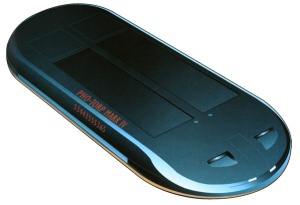
Whether talking about a photon torpedo, a quantum torpedo, or any other type of physical (not strictly energy based) torpedo, the components will generally be the same. Each torpedo tube will have its own propulsion system, guidance system, small matter/anti-matter reactor to power the unit, separated matter/anti-matter storage units for the warhead, and the warhead. The warhead itself consists of four subcomponents, the reactants (matter/anti-matter in the storage units which has a combined use with the matter/anti-matter reactor), the arming system, and the detonation system, and the detonation chamber.
- Propulsion system: A sub-light engine built into the torpedo to allow for it to maintain speed once fired from a ships launch chamber. The more course corrections required the more power required. Extreme course correction are not possible because of forces imposed on the torpedo tube itself can cause detonation, so torpedoes are limited in the rate of course change; this may cause the torpedo guidance system to lose its target lock.
- Guidance system: Internal sensors within the torpedo tube that signal the propulsion system to direct the torpedo towards its intended target. The sensor system is limited in his capabilities, and thus can be fooled or evaded. Guidance systems have two abilities. One being the internal sensors can be programmed to scan and aim for a specific object, location, etc., or the other being that it can simple be pre-programmed to follow a specific course.
- Matter/Anti-matter reactor: Just like the warp core on a starship, this unit produces energy by combining matter and anti-matter within an intermix chamber where the two, within a controlled environment, annihilate each other producing energy.
- Matter/Anti-matter storage units: Deuterium tanks are simple storage containers used to store the deuterium matter needed, while the anti-matter storage units use magnetic fields to suspend the anti-matter in place to prevent contact with its normal matter container.
- Arming system: This system activates all the internal components within the torpedo tube, and readies the detonation system.
- Detonation system: This system has three different components. Component one is the trigger system. Upon sensing an impact the system signals the warhead to release the matter/antimatter storage pods to allow the two reactants to collide within the detonation chamber, resulting in the release of energy; this is nearly the same concept, except intended, as a warp core breach. Component two is a proximity system. This system interacts with the guidance sensors to determine its distance from an object. Once within range it will activate the triggering system to allow the mix of the matter/anti-matter. The final component is the timer/manual detonation system. This system allows for the torpedo to have a timed detonation, or for the tactical officer to manually activate a self-destruct. Star Fleet Torpedoes now incorporate a fail-safe that after a predetermined time, the torpedo, regardless of set program, will self-destruct; this is to prevent Star Fleet technology into inadvertently violating the prime directive, or falling into enemy hands.
- Detonation chamber: This is where the two reactants collide with one another resulting in the release of energy. The detonation chamber an also house a reactant of its own which when combined with the explosive energy of the other reactants, can create a much more devastating effect (this is seen with the Quantum Torpedoes).
Torpedoes on Star Fleet ships/installations:
As any officer knows, it takes time for torpedo’s to load and become ready for launch. This is because unlike many systems on a starship, this one still involves a physical mechanical process. Torpedoes have to be physically moved from their storage in the Torpedo bays, to the torpedo tubes which them moves them and properly positions them within the launcher.
Launcher Components/Sections:
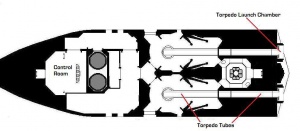
Overall, a starship torpedo launcher can be broken down into two major sections; the torpedo bay and the launch chamber. Torpedo bays generally consist of a launch control room, torpedo tubes, and the storage bay; often, even if located on another deck the storage bay is still referred to as a part of the torpedo bay. The Launch Chamber is considered a section of its own, and is not internal to a starship.
- Launcher Control Room: This is where most work stations within the torpedo bay are located. From here all torpedo launcher operations are monitored. If necessary the launch control room can also fire torpedoes; this is often only done if no other location such as the Bridge or Engineering has immediate launch control.
- Storage Bay: Torpedoes are stored in the torpedo bay storage area, and are left unarmed until moved to the next section of the loading process. Torpedoes in the storage bay pose no immediate threat of detonation. The storage section is designed so that as little movement is required to relocate the torpedo to the torpedo tubes. On ships with larger compliments of torpedoes, they may be stored on multiple racks containing a conveyor belt system that moves the torpedo down the line to a rotating belt that moves the torpedo down and around in a revolving manner, and into place on the track leading into the torpedo tube. Smaller compliments may just have a single rack that simply lowers down the torpedo onto the torpedo tube track.
- Torpedo Tube: This section safely transports the torpedo away from the storage compartment to the launch chamber. Once a torpedo makes its way here it is armed, and sent down to the launch chamber.
- Torpedo Launch Chamber: The launch chamber is the final stop before the torpedo is fired. Type and operations may vary depending on the starship. In some cases, on larger starships, a single chamber can hold up to 8 carefully placed torpedoes to be fired simultaneously. Launchers can accommodate this because they utilise electromagnetic fields in conjunction with the torpedo’s own thrusters to launch the torpedo at high velocities. Star Fleet torpedo launchers are the only known political power to currently have this type of launch chamber technology.
Abilities of Star Fleet Torpedo Launchers:
As previously mentioned, some launch chambers can accommodate the firing of multiple torpedoes at one launch; these are known as "Burst-Fire Torpedo Tubes". This is because they use a series of electromagnets in the launch chamber to propel the torpedo from the ship. Smaller ships lack this ability because additional space is required to position and hold the torpedoes within the launcher. Additionally, the main purpose for this function is that as starships increase in size, generally their maneuverability decreases as well. This presents a problem when trying to line up the ship to have the enemy target within the launchers firing arc. During any one given battle, the opportunities to use torpedoes are much less as the ship size increases. To offset this tactical weakness, larger ships can then fire a larger number of torpedoes during an opportunity given.
There are setbacks to this function however. One being the load time would be much higher as the torpedoes have to be positioned correctly in the launch chamber and programmed by tactical else they risk bumping into each other during launch and explode in close proximity to the launching ship/station and destroy itself. The other risk is, while it’s going through the load process and positioning within the launch chamber, one strong hit by an enemy’s weapons into the launchers would explode the torpedoes and potentially destroy the ship, or at the least cause severe damage.
Because of this risk, one would attempt to fire the contents of the launch chamber as soon as practical.
Micro Torpedoes
Micro Torpedoes or micro-torpedoes are small-scale weapons carried by smaller vessels such as Escorts, Fighters or Runabouts. Roughly one third of the size of a torpedo; micro torpedoes lack the range and yield of their larger counterparts. Microtorpedo launchers lack the electromagnetic fields that assist in the launch of larger weapons, and rely solely on the thrust of the small engine to carry the warhead to target. These are sometimes misidentified as "Missiles" due to the lack of powered launch tube.
Plasma Torpedoes
The fiery ball of the Plasma Torpedo is the last thing many starship captains will see before meeting their maker. The Romulan navy commonly uses this devastatingly powerful weapon to supplement their standard Photon Torpedo launchers, while the Cardassian military only utilise them on automated defence platforms. There are four known sub-types to this weapon, all believed to be armed with an internal "fire and forget" seeker head, though Plasma Torpedoes are notoriously less capable at tracking moving targets than their less destructive cousins:
- Type F : The least powerful plasma torpedo, the Type F still packs a pretty good punch. This variation of the Plasma requires roughly the same amount of energy to arm as the photon torpedo. However, it takes approximately 33% longer to arm this weapon. Like all plasma torpedoes, it begins losing warhead strength the instant it is launched. A full strength strike yields twice the power of a photon torpedo. All plasma torpedoes lose 5% of their warhead strength for every 10,000km travelled.
- Type G : Used almost exclusively by the Gorn, this outdated weapon is still in service on many Gorn warships. The faster Type S is slowly replacing it. This weapon requires 35 percent more power to arm and cycles 33% slower than the photon torpedo. The warhead strength is three times that of the photon torpedo
- Type S : The type S is the typical version of this weapon. It requires 33% more power than a photon and cycles 28% slower. The warhead of the Type S torpedo is four times more powerful than the photon torpedo.
- Type R : At one time, this powerful weapon could only be mounted on large bases. However, this weapon has been seen on some of the newest Romulan and Gorn ships. The type R requires more than 50% more power than a photon and 33% more time to arm. The warhead on this weapon is six times more powerful than the photon torpedo. It is believed that Romulan ships cannot cloak and charge this weapon at the same time, as the energy requirements are too demanding.
- Engineering
Navigation menu
Personal tools.
- View source
- View history
- Administration
- Historical Archives
Star Fleet Resources
- Corps of Engineers
- Office of Intelligence
- Medical Command
- Applied Sciences
- Security Command
- Elite Joint Operations
- Tactical Command
Additional Tools
- Recent changes
- Random page
- What links here
- Related changes
- Special pages
- Printable version
- Permanent link
- Page information
- Cite this page
- This page was last edited on 9 October 2022, at 16:19.
- Privacy policy
- About Federation Space - Official Wiki
- Disclaimers
- Mobile view
Ipad Top Ads
[Top 10] Star Trek Online Best Ship Weapons That Are Powerful
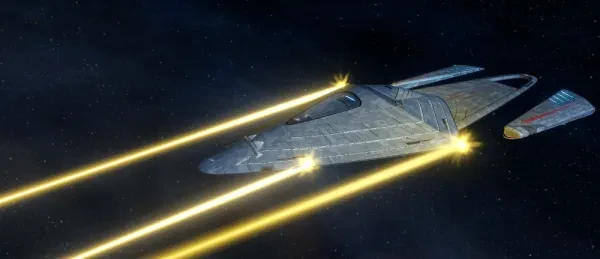
Starship weapons are the most important items in the game, second only to bridge officers in their utility and their use by players. In this list, we’ll be going over the top ten best weapon types that you can use, why they’re useful, and how to get them! Like our ground weapons list, this will include items that are expensive to get, just because they’re so dang useful!
Weapons in Star Trek Online typically come in three varieties: beams, cannons, and projectiles. Beams include dual beam banks and single beam arrays; cannons have single, dual, and dual heavy cannons; and projectiles are torpedoes, missiles, and mines. Each type has a purpose and works best for specific builds.
This list does not go into the specialized list for torpedoes and mines, which are highly dedicated and distinct from the "standard" weapons most players deal with.
With that out of the way, let us begin!
10. Zhat Vash Disruptors (Best For Bonus Damage)
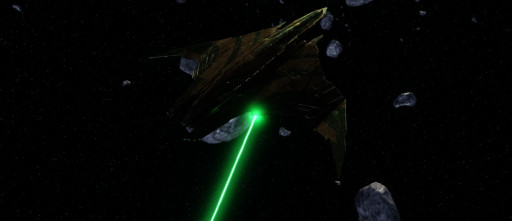
Zhat Vash have unique visuals!
Zhat Vash disruptors are a relatively recent addition to the game that came along with the Picard Lockbox. These weapons are an "updated" Romulan weapon system that has a 4% bonus damage per stack mechanic, maxing out at 5 stacks. This means that as long as the weapon is firing on the target, it can gain a 20% damage bonus!
The weapons also come with unique visuals and sounds, which can add to the fun factor when using them.
As far as weapons go, the biggest draw here is if you’re doing a bonus damage stack—lots of bonus damage consoles, powers, traits, etc. It isn’t that much of an increase, as traits and consoles give you the best yield, but if you’re chasing those higher numbers, every bit of DPS counts.
They take our number 10 spot thanks to this, but keep in mind that the weapon proc is per enemy, meaning that they are great against HP sponge types and terrible against swarmer type enemies.
What Zhat Vash Disruptors Excels In
- Their bonus damage mechanic lets them get up to 20% extra damage, putting them into the same category as the Spiral Wave Disruptors when fully spooled up.
- They have unique visuals and sounds, which is always fun when it comes to ship weapons.
- Fairly cheap, so easier to get than some of the more exclusive weapons on this list
Weapon Stats
Disruptor Array
- Energy Damage
- 250' targeting arc
- to target: __ Disruptor Damage (__ DPS)
- -10 Weapon Power to self while this weapon is firing
- 2.5% chance: Apply Viridium Isotope to Foe for 45 sec (max 5 stacks)
- +4% Bonus Damage with this weapon per Viridium Isotope applied to target
- 1 sec recharge
How to get Zhat Vash Disruptors: They can be gained from the Exchange, typically for a few million energy credits depending on weapon type. Otherwise you can get them from the Picard Zhat Vash Lockbox.
9. Elachi Disruptors (Best For Shield/Armor Penetration)
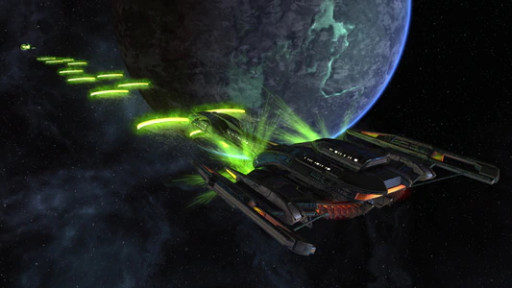
Evade the terrifying Elachi - or just use their weapons instead!
An older weapon but a classic, the Elachi Disruptors were once the absolute king of PVP in Star Trek Online thanks to their shield and armor penetrating buff. Back when Beam: Overload was a single-fire alpha strike style weapon, escorts used to run full Elachi Dual Beam Banks up front, then pop an enemy ship with a Beam: Overload.
Since those crazy days, however, it’s fallen out of favor. It isn’t as powerful as standard content, and PVP has been dominated by Space Magic builds for a long time, rendering ships that use this fairly underpowered.
That said, this still does ruinously huge damage when combined with Beam: Overload or Cannon: Rapid Fire on NPC targets. It’s especially good against ships that have high shield values, like Romulans, Federation, etc., since they tend to have weaker hulls. It's not so fantastic against the Borg, but it can still work if you’ve got very high critical damage values.
If you’re wanting to utterly ignore shields, I would pick between the Dual Heavy Cannons and the Dual Beam Banks-single arrays and cannons aren’t worth it.
What Elachi Disruptors Excels In
- Has total shield penetration in addition to 50 armor penetration, which essentially removes any natural defenses most NPC ships have.
- With high damage builds, it can outright delete targets, bypassing an entire layer of HP.
- Very good on Escorts or other ships that are DPS focused.
Elachi Disruptor Dual Beam Bank
- 90' targeting arc
- 2.5% Chance: +50 Armor Penetration and 100% Shield Penetration
How to get Elachi Disruptors: These are old weapons, so getting them from the Lockbox isn’t as feasible anymore. They’re also quite expensive on the player market, making these difficult to get a full set of.
8. Ba’ul Antiproton Beams (Best For Beam: Fire At Will)
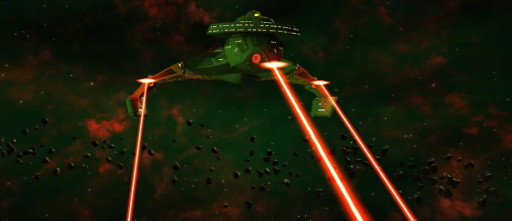
Fancy chain weapons? Ba'ul got your back.
Ba’ul energy weapons were another one of the ex-kings of the game up until they got heavily nerfed. These weapons, especially the beams, were very powerful because of the bounce-effect, so when combined with Fire At Will, you could suddenly be a disco-ball of death, destroying the entirety of an enemy fleet by yourself!
But you can’t quite do that anymore, as the bounce damage has been reduced significantly since the heyday of the Ba’ul beams. Still, they’re good enough to make the list at number 7 thanks to the feature.
Specifically, combined with Fire At Will and high bonus damage, you can tear apart fleets of lower HP ships and cause some good trouble for the bigger sponges out there. Fire At Will isn’t as powerful as Beam Overload, so what happens if you use the Ba’ul beams with it?
Well, it’s tricky. The tooltips read that 5% of the total damage is converted into a refraction, and if you crit for 500,000 damage, that's a measly 25,000 damage bounce. It sounds like a lot until you realize that’s just a single bounce to a single nearby target for that single beam attack.
What makes it work so well with Fire At Will is the volume of fire-when you’ve stacked bonus damage and weapon haste, you output a multitude of attacks on numerous enemies all at once, which rapidly adds up to big DPS numbers versus the frankly pitiful damage of the Beam Overload version.
Despite their limitations, they’re still fun beams, and they’re the only antiprotons that don’t look like lightning bolts in space!
What Ba’ul Antiproton Beams Excels In
- Has a refraction mechanic, letting your weapons do an additional chain shot for 5% attack damage.
- When combined with Fire At Will, you can fill up space with dozens of refraction shots, whittling down enemies.
- Has a unique visual and sound effect.
- Best used by Dual Beam Bank 5/3 setup ships like the Gagarin or other Miracle Worker ships.
Weapon Stats Ba'ul Antiproton Array
- to target: __ Antiproton Damage (__ DPS)
- Ba'ul Refraction - Each shot chains to an additional target for 5% of attack damage
How to get Ba’ul Antiproton Beams: Like the others, this is a player market or Lockbox weapon. Given the age, it’s likely to be pretty expensive at this point, so it can be tricky to get your hands on these.
7. Sensor-Linked Phaser Beam Array (Best For Damage)
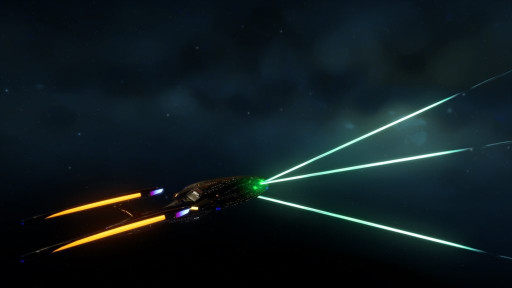
For maximum pewpew to give you that "Star Wars" feel in your "Star Trek"!
Sensor-Linked weapons are yet another ex-king knocked off their throne by time and expansion. These weapons take a different approach to most in that they have a skill bonus rather than a weapon effect. That is to say, they improve the captain's skills that influence the total damage of a weapon system. They’re also cumulative!
This means that you want to have a full set of Sensor-Linked weapons, as they’ll give you up to +40 to Starship Defenses (making you harder to hit) and Starship Critical Hit Severity (making your criticals hit way harder).
These were very popular beams in high-end builds for a long time, only displaced after the release of the Advanced Disruptors/Phasers (which I didn’t include, as they are impossible to get).
They possess no further procs or benefits, however, making them a very one-dimensional buff weapon. In terms of style, they look identical to the Discovery era phaser weapons, with the same effects and sounds.
What Sensor-Linked Phaser Beams Excels In Passive major buffs to Defense and Critical Damage, which is a rare combination in the game. Excellent in beam or cannon form, as the buffs work regardless. Best used with a full set, however, to get the most out of them. Looks and sounds just like the phasers did in Discovery!
+5 Starship Defensive Maneuvering (Improves Defense)
+5 Starship Weapon Amplification (Improves Critical Hit Severity with Weapons)
Phaser Array
- to target: __ Phaser Damage (__ DPS)
How to get Sensor-Linked Phaser Beams: Another one of those player market weapons or Lockbox weapons. These are pretty expensive, as they’re still seen as a good middle-ground weapon.
6. Spiral Wave Disruptors (Best For Damage)
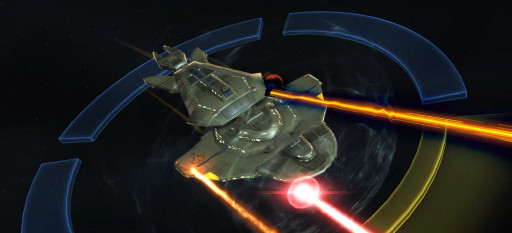
The Cardassians really were kind of terrifying weren't they?
Welcome to Number 6, your last stop shop for generic weapons to fill your ship with! Spiral Waves have moved back and forth from best weapon to second best weapon type to use for many years now. With nerfs to the Advanced Phasers, they’re back in the limelight as the best weapon type in the game!
So what makes these so good? They have the dual proc of knocking a subsystem offline and the disruptor proc of -10 damage resistance for fifteen seconds. In of itself, that’s pretty dang good, though with only a 2.5% chance to proc it isn’t a great fit for Beam Overload builds.
These are extremely good weapons for anyone to use and function as the best weapon type in the game.
What Spiral Wave Disruptors Excels In
- They have a dual proc that disables subsystems as well as reduces damage resistance, making these very powerful when combined with Cannon Rapid Fire or Fire At Will.
- Fantastic damage output for the damage type thanks to a built in DMG proc.
- Easy to get, just need one of the Cardassian C-Store ships, making these the most accessible high end weapons.
Weapon Stats Spiral Wave Disruptor Beam Array
- to target: 2.5% Chance: One Random Subsystem Offline for 5 sec
- to target: 2.5% Chance: -10 All Damage Resistance for 15 sec
How to get Spiral Wave Disruptors: You unlock these weapons after buying any of the Cardassian playable starships (usually they’re around $30.00 for one) which then gives you the option to buy the various types directly from the Dilithium store for 45,380 each.
5. Advanced Piezo-Plasma Beam Array (Best For Beam Overload/Surgical Strikes)
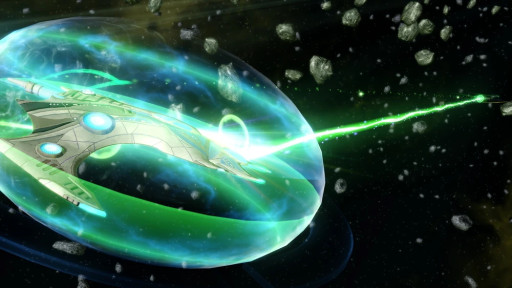
Healing beam? Healing beam.
Our Top 5 list is actually individual weapons rather than whole weapon types, and I’ll explain why. With any particular ship build, you’ll nearly always include one of these top 5 weapons because of their versatility, power, or set bonuses that dramatically increase the efficiency of your ship build.
The Piezo-Electric Plasma Beam is an example of a synergistic weapon that’s able to do some truly incredible things when thrown onto a plasma weapon build. By itself, it’s not too much to write home about-it has a chance to proc a regenerative matrix on your ship that improves passive hull healing and shield healing for yourself and nearby allies. It includes critical severity and, most importantly, technical overload capability.
Technical Overload works in conjunction with powers like Surgical Strikes or Beam Overload and causes a secondary explosion at the target location that scales with the damage done. Essentially, you "double tap" with it in addition to an AOE. On top of that, electrical resistance is low on most ships, giving this weapon a resistance bypass effect!
Even if you aren’t using a uniform damage type, this weapon is still extremely good on any Beam Overload or Surgical Strikes build thanks to its bonuses.
What Advanced Piezo-Plasma Beam Array Excels In
- Fantastic weapon for synergy bonuses when it comes to Beam Overload or Surgical Strikes. Specific traits that extend the firing duration of either add even more DPS to this weapon type.
- Works with any beam type, not just plasma, thanks to its primary damage being found in the electrical secondary effect.
- Easy to get through the reputation system and comes in plasma and polaron flavors in case you need specific synergies.
- It’s great as a fore or aft weapon depending on ship build.
Weapon Stats Advanced Piezo-Polaron Beam Array
- to target: __ Polaron Damage (_ DPS)
- 5% chance: Apply Protomatter Regenerative Influx to self and nearby allies:
- * +___ Shield Regeneration for 10 sec
- * +Regenerate 2.5% of Max Hull per second for 10 sec
- +60% Critical Severity
- Additionally, when first activated while Beam Overload or Surgical Strikes are active, this weapon triggers a Technical Overload on the target that deals electrical damage in an area around the target that is increased if the target is electrical.
How to get Advanced Piezo-Plasma Beam Array: This weapon is gained by completing the Lukari Tier 4 Restoration Initiative Reputation. It takes a while to get there, but it’s well worth it to get this weapon. Total cost is 500 Lukari Marks, 2 Protomatter Microcontainers, 15,000 Refined Dilithium, and 30,000 Energy Credits.
4. Dark Matter Quantum Torpedo (Best For All Builds)
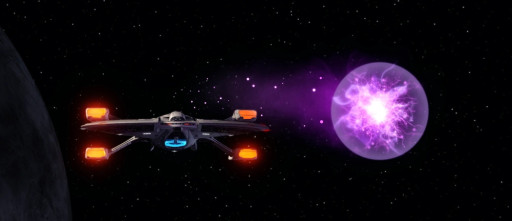
Laugh maniacally while your enemies disintigrate before you!
The Dark Matter Quantum Torpedo is the everyman's weapon in Star Trek Online. Combined either with our Number 1 weapon and the Lorca’s Fire Control Tactical console, it produces a torpedo that’s just fantastically good at all content.
The DM is powerful not because of its kinetic damage, which is just average, but because of the nature of its proc. It applies "Dark Matter"—a stacking DoT that dissolves the target slowly over time. It also comes with the added benefit of disabling the Warp Core breech that usually happens when you destroy an enemy.
This makes it not as good for science fiction builds since they want the warp core breach, but it’s fantastic for anything else. The torpedo combined with Torpedo Spread III will spread the DoT to every ship on the field, ensuring that you maximize the DoT and increasing your overall DPS by a good margin.
The set effect fires off a torpedo automatically, without using any cooldowns or any other systems, to any target below 50% HP with a maximum rate of fire of 1 per second and 1 per enemy. This means any enemy near you will get hit by a DoT as they’re taking damage!
What Dark Matter Quantum Torpedo Excels In
- High kinetic damage thanks to its Quantum Torpedo base stats.
- Has a high damage DoT that disables warp core breaches.
- With the full set bonus, it works like another weapon with the DoT build in that autotargets low HP enemies.
Weapon Stats Dark Matter Laced Quantum Torpedo
- Kinetic Damage
- 90' targeting arc
- to target: ___ Kinetic Damage (___ DPS)
- +4% Critical Chance
- Add a stack of Dark Matter Dissolution, __ Physical Damage every 1 sec for 10 sec.
- Critical Strikes add two stacks instead
How to get Dark Matter Quantum Torpedo: Gained by doing the Discovery Reputation and is unlocked at Tier 1, making this among the most accessible weapons in the game. Costs 500 Discovery Marks, 2 P.stellaviatori Spore Canisters, 15,000 Refined Dilithium, and 40,000 Energy Credits.
3. Prolonged Engagement Phaser Beam Array (Best For Phaser Builds)
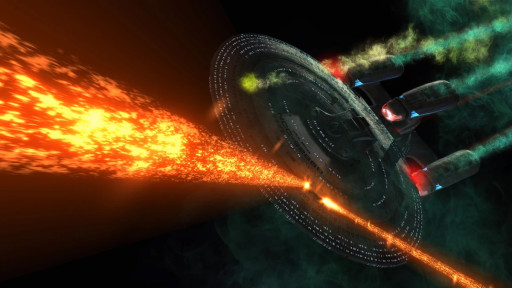
The classic, timeless, and ever present TNG/DS9 orange! Now in "it gets better over time" flavor!
The Prolonged Engagement Phaser Beam Array is ranked third!This weapon and its peers all have a scaling mechanic that works best when in combat. That is to say, they get better the longer you fight!
The PEP is a great addition to any Phaser build because of the stacking amplification effect it gets in addition to the firing haste bonus that applies to this weapon. More or less, at max stacks, you’ll be doing 115% more damage compared to a normal phaser array with 20% added firing haste!
It also maintains the normal phaser proc of disabling a random subsystem, which can be a nice bonus when in combat against a lot of enemies. High damage values combined with the added haste really put this thing in a league of its own until you reach the top 2.
What Prolonged Engagement Phaser Beam Array Excels In
- Ramp up damage puts it well above anything but the top 2 on this list in terms of raw damage output.
- Haste mechanic means it fires even faster! People will often use the Phaser Cannons to maximize this haste bonus.
- The added proc means you’ll be able to do high damage and still disable subsystems on enemy ships, which is handy!
Weapon Stats Prolonged Engagement Phaser Array
- 250' Targeting Arc
- to target: __Phaser Damage (__DPS)
- Applies one stack of Amplified Relays.
- * Per stack, this weapons deals 1% increased damage
- * Every 5 stacks of Amplified Relays, gain 20% Firing Cycle Haste for this Weapon for 8 secs
How to get Prolonged Engagement Phaser Array: This weapon can only be gained through the Phoenix Lockbox via a Rare Token.
2. Terran Task Force Disruptor Beam (Best For All Builds)
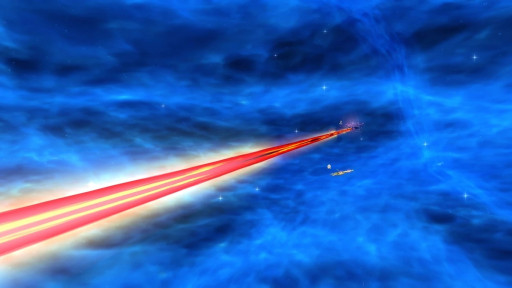
For when you need a weapon of fear AND war!
The Terran Task Force weapons were, for a very long time, the undisputed "always slot it" weapons in Star Trek Online. It was just so dang good, there was no reason not to use it on every build, even science builds! It’s been nerfed once or twice here and there, but it's still a truly legendary weapon in the halls of Star Trek Online history.
What this weapon does is that it increases the total damage dealt to an enemy by up to 200% based on missing HP, reaching its maximum ramp up when they drop to 25% HP. This is the original Borg Killer. You slapped this thing on a tactical cube at those values and you watched your DPS fly sky high.
The radiation damage proc effect isn’t bad either, but in comparison to the damage ramp up mechanic, it pales in comparison in regards to sheer utility. The ramp-up works against any foe in the game!
The high base damage of the beam and cannon versions adds insult to injury, since up until the Discovery Reputation, nothing came close to competing against it.
What Terran Task Force Disruptor Beam Excels In
- High base damage with a built in damage ramp up mechanic.
- Deletes things when you get them to below 25% HP.
- Comes in Disruptor and Phaser variants, though it doesn’t get their particular procs.
Weapon Stats Terran Task Force Phaser Array
- to target: _ Phaser Damage (_ DPS)
- (Damage dealt increases as target's hull decreases, up to 200% damage at 25% hull)
- to target: 2.5% chance: Apply stack of Withering Radiation
- (Lasts for 60 sec, 5 stacks max)
- _ Radiation Damage to target per stack of Withering Radiation
- +20% Critical Severity
How to get Terran Task Force Phaser Array: A Reputation system weapon, this comes from the Terran Task Force and unlocks at Tier 4. Total cost is identical to the other Reputation weapons - 500 Terran Marks, 2 Terran Gravimetric Inducers, 15,000 Refined Dilithium, and 30,000 Energy Credits.
1. Phaser Wide Angle Dual Heavy Beam Bank (Best For Everything)
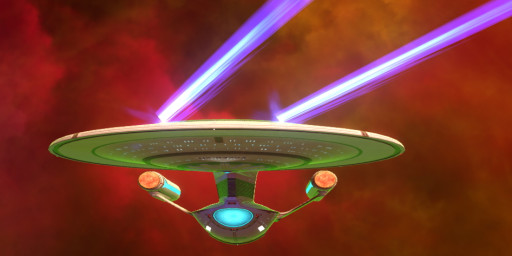
Boldly going where phasers have never gone before!
Our number one spot is the Phaser Wide Angle Dual Heavy Beam Bank! This heavy weapon is a wide angle version of a typical dual beam bank, giving it a 135 degree targeting arc. This means that if you are using a broadside cruiser, you can "wiggle" or "fish tail" to get it to fire at enemies while still broadsiding to maximize uptime.
Like the other Reputation system weapons, this weapon is a relatively recent addition to the game and, like the Terran weapon, has become the undisputed champion of "always slot this weapon, do it now". The reason being that it also has a ramp up mechanic, but only when combined with the other two pieces of the set.
With the Dark Matter Torpedo or Lorca’s Tactical Console, you’ll get War Discretion, which gives you up to 25 stacks of 1% critical severity for 25 seconds. This is huge, given that the critical severity stat determines the raw output of your critical hits!
Combine it with Beam Overload and you’ve got one of the hardest hitting weapons in the game, beaten only by dedicated torpedo builds.
The wide angle, set synergy, and high stats make this our number one weapon in our Top 10 Star Trek Online weapons!
What Phaser Wide Angle Dual Heavy Beam Bank Excels In
- Has a 135 degree firing arc, letting you broadside with it if you pilot intelligently.
- Set bonus turns this into the hardest hitting beam weapon in the entire game at base value.
- When combined with Surgical Strikes or Beam Overload, you end up with devastating strikes that can pass the 500,000 mark when built correctly.
- Looks like the Discovery phasers, for those who are a fan of the show.
Weapon Stats Phaser Wide Angle Dual Heavy Beam Bank
- 135' targeting arc
- +10% Critical Severity
- -12 Weapon Power to self while this weapon is firing
- Critical strikes add +1% Bonus Damage to this weapon for 20 seconds, up to +20%
- +4% Critical Chance
How to get Phaser Wide Angle Dual Heavy Beam Bank: The last weapon here on our list is also a Reputation weapon - it has the same costs as the Dark Matter Torpedo but is unlocked at Tier II.
And there we have it! Our Top 10 Star Trek Online Best weapons list! As always, one of the nice things about the game is that you don’t have to have these in order to be successful in the game. You can use any weapon in any combination and still be able to complete basic content. I hope you enjoyed this list. Please look forward to more!
You may also be interested in:
[Top 15] Star Trek Online Best Ships (From Early Till Late Game)
Star Trek Online Best Race - Which To Choose

You May Also Be Interested In:
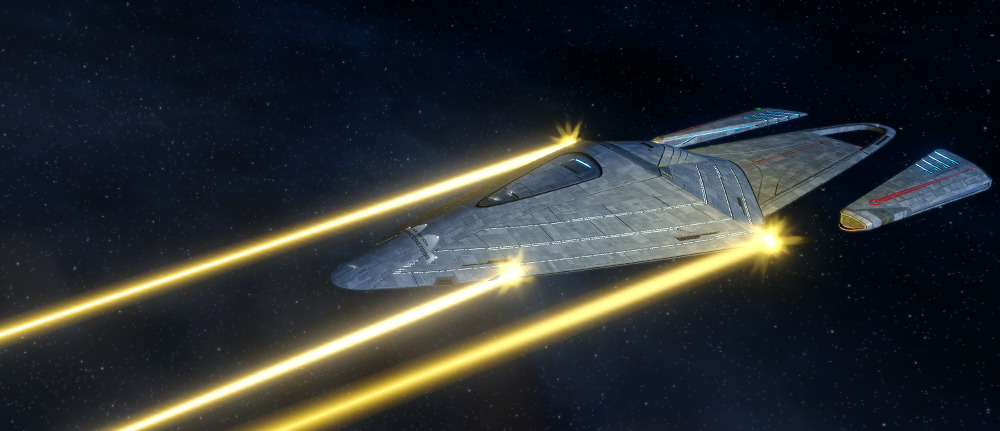

Memory Beta, non-canon Star Trek Wiki
A friendly reminder regarding spoilers ! At present the expanded Trek universe is in a period of major upheaval with the continuations of Discovery and Prodigy , the advent of new eras in gaming with the Star Trek Adventures RPG , Star Trek: Infinite and Star Trek Online , as well as other post-57th Anniversary publications such as the ongoing IDW Star Trek comic and spin-off Star Trek: Defiant . Therefore, please be courteous to other users who may not be aware of current developments by using the {{ spoiler }}, {{ spoilers }} OR {{ majorspoiler }} tags when adding new information from sources less than six months old (even if it is minor info). Also, please do not include details in the summary bar when editing pages and do not anticipate making additions relating to sources not yet in release. THANK YOU
- Memory Beta articles sourced from Starfleet Command II
- Memory Beta articles sourced from Starfleet Command: Orion Pirates
- Memory Beta articles sourced from episodes and movies
Starship weapon
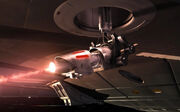
An example of a ship-mounted phase cannon from 2152 .
In order to protect crews from the dangers of natural phenomena and hostile alien races and cultures alike, many starships are equipped with weapons of some sort, mounted directly onto the ships.
- 1.1 Purpose
- 1.2 History
History and specifics [ ]
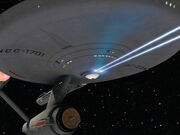
The USS Enterprise firing phasers in 2266 .
Purpose [ ]
Starship weapons were often a form of gun or torpedo . Guns such as phaser cannons and disruptor cannons were a form of naval artillery . Phasers would inflict thermal and kinetic damage on a target, sometimes vaporizing it. Missiles or torpedoes were a form of self-propelled explosive munition, and could be guided or unguided. Photon torpedoes inflicted kinetic explosive damage. One type of gun and one type of torpedo launcher were the standard equipment on most warships for all major species, such as the Federation , Klingons , Romulans , Cardassians , Ferengi , Breen , Gorn , Tholians and Dominion . ( TOS video games : 25th Anniversary , Judgment Rites ; ST video game : Starfleet Command , ST video game : Starfleet Command II: Empires at War ST video game : Starfleet Command: Orion Pirates , SA video game : Starfleet Academy , ST video game : Klingon Academy )

A standard Starfleet photon torpedo changed little in appearance for 100 years.
They were used in conjunction to deplete the shields of an enemy target, then inflict damage directly on the hull and essential systems of the vessel once shields were depleted. One type of weapon was sometimes more effective against shields vs ship's hulls. Sometimes directed energy weapons like phasers were preferred to deplete shields, then photon torpedoes used to destroy the hull directly. However, both weapons were effective in any case, and phasers alone were often enough to destroy a target, being preferred for disabling a specific enemy ship's system, since they could accurately target one localized part. ( TNG video games : A Final Unity , Generations , Birth of the Federation , ST video game : Bridge Commander )
History [ ]

The Klingon Empire employed disruptor weaponry on starships.
In the early days of United Earth Starfleet , before the 2150s, a human starship was generally equipped with archaic plasma cannons and spatial torpedos . Later these weapons were superseded by phase cannons and photonic torpedos , which were either early weapons of the phaser and photon torpedo family, or perhaps just archaic terms for these weapons. ( ENT episodes : " Broken Bow ", " Silent Enemy ")
By the 23rd century, almost every species capable of warp travel had adopted particle beam weapons such as the phaser , and antimatter warheads such as the photon torpedo . The Klingon Empire and Romulan Star Empire , the Federation's two most powerful political adversaries, employed disruptors , a weapon similar to a phaser, and photon torpedos , or occasionally in the case of Romulans, plasma torpedos . ( TOS video games : 25th Anniversary , Judgment Rites ; ST video game : Starfleet Command , ST video game : Starfleet Command II: Empires at War ST video game : Starfleet Command: Orion Pirates , SA video game : Starfleet Academy , ST video game : Klingon Academy )
See also [ ]
- accelerator cannon
- assault phaser
- chain pulsar
- compressor beam
- disruptor cannon
- disruptor nacelle
- energy wave
- heavy disruptor
- particle cannon
- phase cannon
- phaser array
- phaser bank
- phaser emitter
- photon torpedo
- plasma torpedo
- quantum torpedo
- 1 Ferengi Rules of Acquisition
- 2 Odyssey class
- 3 Achilles class
List of starships by weapon hardpoints
- VisualEditor
This page lists Tier 6 starships by the number of weapon slots they possess.
- 1.1 5 Fore, 3 Aft
- 1.2 4 Fore, 4 Aft
- 1.3 3 Fore, 5 Aft
- 2.1 5 Fore, 2 Aft
- 2.2 4 Fore, 3 Aft
- 3.1 5 Fore, 1 Aft
- 3.2 4 Fore, 2 Aft
- 3.3 3 Fore, 3 Aft
Eight Weapons [ | ]
5 fore, 3 aft [ | ], 4 fore, 4 aft [ | ], 3 fore, 5 aft [ | ], seven weapons [ | ], 5 fore, 2 aft [ | ], 4 fore, 3 aft [ | ], six weapons [ | ], 5 fore, 1 aft [ | ], 4 fore, 2 aft [ | ], 3 fore, 3 aft [ | ].
Template:Playableshipsbytype
- 2 List of canon starships
- 3 Playable starship
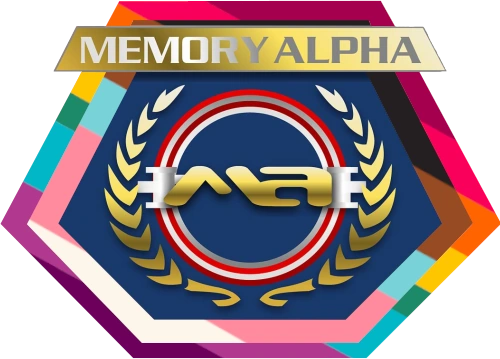
Defiant class
The Defiant -class battleship , officially an escort vessel , began development in 2366 as a small, highly powered, heavily armed warship intended to defend the United Federation of Planets against the Borg . The USS Defiant (NX-74205) was the prototype of what was to be a new Federation battle fleet. However, the ship had numerous design problems that were made apparent during its shakedown cruise . These flaws, combined with the decreased urgency of the Borg threat, caused Starfleet to table its plans for a battle fleet and put the Defiant in storage. ( DS9 : " The Search, Part I ")
The Defiant prototype was pulled out of storage in 2371 when the Dominion threat emerged. After several upgrades by Deep Space 9 Chief of Operations Miles O'Brien , the ship was subsequently deemed worthy of use and more ships of the class were constructed. ( DS9 : " The Search, Part I ", " Call to Arms "; VOY : " Message in a Bottle ")
- 2.1 Propulsion systems
- 2.2.1 Phaser cannons
- 2.2.2 Phaser emitters
- 2.2.3 Torpedo launchers
- 2.2.4 Mines
- 2.2.5 Deflector shields
- 2.2.6 Ablative armor
- 2.2.7 Cloaking device
- 3.1 Main bridge
- 3.2 Medical facilities
- 3.3 Main engineering
- 3.4 Crew berthing
- 3.5 Mess deck
- 3.6 Transporter rooms
- 3.7 Cargo hold
- 4 Ships commissioned
- 5.1 Appearances
- 5.2.1 Design
- 5.2.3 Designation
- 5.2.4 Interior
- 5.2.5.1 Specifications
- 5.2.5.2 Warhead
- 5.3 Apocrypha
- 5.4 External links
While Starfleet had participated in numerous battles and engagements in its history, it had largely fought those battles with the ships they had available. The Defiant -class starship was a heavily armed, limited-role vessel: the first true "warship" Starfleet had ever designed.
It was developed in response to the Borg threat as originally encountered at System J-25 in 2365 . ( TNG : " Q Who ") After initial and hostile first contact with the Borg, Starfleet did what it hadn't done in decades, place greater emphasis on defense of the Federation, including the incorporation of war game exercises . ( TNG : " Peak Performance ") Likewise, Starfleet Tactical threw every resource it had into the project, where it drafted plans for weapon system designs capable of fighting against the Borg. ( TNG : " The Best of Both Worlds ")
In 2366 , Starfleet also began to explore the possibility of building a new class of starship that had no families , no science labs , no luxuries of any kind, and existed simply to "to fight and defeat the Borg". ( DS9 : " The Search, Part I ") By mid-year, Commander Elizabeth Shelby had taken over the tactical analysis aspect of the entire project, and over a year after initial contact, the majority of Starfleet's new designs were still on the drawing board and at least twenty-four months from completion. ( TNG : " The Best of Both Worlds ") Shortly after the massacre at Wolf 359 , Lieutenant Commander Benjamin Sisko joined the development team at the Utopia Planitia Fleet Yards and the prototype was built. ( DS9 : " The Search, Part I ")
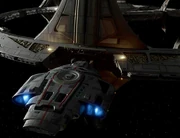
The USS Defiant docked at Deep Space 9
The Defiant -class was heavily armored and incorporated the latest in Starfleet weaponry and defensive technology along with a class-7 warp drive. The Defiant was considerably smaller than most other Federation starships. Despite the ship's compact size, she was packed to the brim with equipment designed for larger starships. ( DS9 : " The Search, Part I ")
The prototype Defiant performed poorly on its shakedown cruise . The vessel was overpowered and overgunned for a ship of its size; so much so that the Defiant nearly shook itself apart when the engines were tested at full power . These design flaws , combined with the decreased urgency of the Borg threat, led Starfleet to abandon the project and put the prototype away in storage. ( DS9 : " The Search, Part I ")
The Dominion threat discovered in 2370 led Benjamin Sisko, now the commanding officer of starbase Deep Space 9, to pull the prototype vessel out of storage. The ship was assigned to his station, and it was officially christened that same year on Stardate 47538.5. The prototype was then equipped with a Romulan cloaking device , the only Federation starship to possess such technology as the result of an amendment to the Treaty of Algeron . ( DS9 : " The Search, Part I ") Thanks to the efforts of Chief O'Brien, many of the original ship's design flaws, such as its structural integrity field , were fixed. ( Defiant dedication plaque ; DS9 : " Shattered Mirror ")
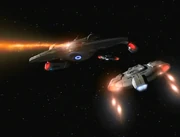
Two Defiant s and an Akira -class battle the Romulans
At some point, Starfleet eventually decided to put the Defiant class into full production. By the end of 2373 , there were a significant number of Defiant -class ships in operation, and over the next two years, they played a vital role in the Dominion War . ( DS9 Season 7 ; VOY : " Message in a Bottle ", " Endgame ")
Commenting on the appearance of additional Defiant -class ships appearing in "A Call to Arms", Ronald D. Moore said, " We just decided that the Fed was now cranking out Defiant -class vessels based on Sisko's recommendations to SF Command. " ( AOL chat , 1997 )
In 2373 , the USS Defiant was given a chance to do what it had been designed for when it participated in the Battle of Sector 001 , where a Federation fleet engaged a single Borg cube on its way to assimilate Earth .
As the cube approached Earth, the Defiant , under the command of Lieutenant Commander Worf , was disabled by a tractor beam strike after having sustained massive battle damage. With the ship's main power and defensive systems offline, Worf prepared to ram it into the Borg cube when the USS Enterprise arrived to assist the tattered Federation fleet. As the Enterprise entered the battle, the Defiant lost life support after sustaining another hit from the Borg tractor beam, and the survivors were transported onboard the Enterprise . Shortly after the Borg cube was destroyed, Captain Picard noted that the Defiant , despite being adrift, was salvageable. ( Star Trek: First Contact )
The USS Defiant was destroyed by a Breen interceptor in 2375 , during the Second Battle of Chin'toka . Another Defiant -class ship, the USS Sao Paulo , was then assigned to Deep Space 9. Given the USS Defiant 's exceptional record under Captain Benjamin Sisko's command, the Chief of Starfleet Operations gave a special dispensation to change the ship's name to Defiant . On this ship, the shield generators were completely reconfigured so that they would not be affected by the Breen 's energy-dampening weapon . However, unlike the original Defiant , this ship was not equipped with a cloaking device. This new Defiant played a distinguished role in the final battle with the Dominion at Cardassia Prime and remained stationed at Deep Space 9 by the end of 2375 . ( DS9 : " The Changing Face of Evil ", " The Dogs of War ", " What You Leave Behind ")
Schematics of the ship were also part of the standard library computer , with images of the class appearing in the LCARS files of the USS Voyager and the holographic files of the USS Protostar . ( VOY : " Drone ", " The Voyager Conspiracy "; PRO : " Starstruck ")
In 2384 , ships of this class were among the fleet that intercepted the Protostar in a restricted sector near Gamma Serpentis . ( PRO : " Mindwalk ")
Eighteen ships of this class participated in Frontier Day celebrations over Earth in 2401 . ( PIC : " Võx ", " The Last Generation ")
Knowledge of this class was retained well into the 31st century , as demonstrated when Captain Jonathan Archer and Lieutenant Malcolm Reed viewed schematics on the class in the 22nd century while accessing the database belonging to temporal agent Daniels . ( ENT : " Shockwave ")
Technical data
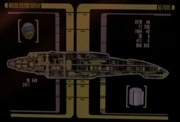
MSD of the Defiant -class
Propulsion systems
The warp core spanned three decks in the aft section of the ship. The class-7 warp drive was extremely powerful for a ship of this size, and as such, Defiant -class vessels put out a warp signature equivalent to much larger starships. ( DS9 : " The Search, Part I ", " One Little Ship ") The propulsion systems of the Defiant -class were overpowered for her size, to the extent that the original configuration would rip the ship in half if run above warp 9. ( DS9 : " The Sound of Her Voice ") This flaw contributed to the mothballing of the prototype. ( DS9 : " The Search, Part I ") Despite this issue being resolved after the prototype was deployed to DS9, some ships produced later, such as the USS Valiant , still suffered from similar issues. ( DS9 : " Valiant ") When energy was diverted from the weapons' ready reserves, a Defiant -class ship could achieve the speed of warp 9.5. ( DS9 : " The Sound of Her Voice ")
The large power signature of the engines proved taxing for the USS Defiant 's cloaking device and remaining concealed initially required stopping and powering down the ship, although this issue was later addressed. ( DS9 : " The Search, Part I ", " The Way of the Warrior ", " Trials and Tribble-ations ")
In the first draft script of " The Dogs of War ", the Defiant -class was established as being capable of warp 9.8.
According to the Star Trek: Deep Space Nine Technical Manual (p. 153), the Defiant -class was rated for a maximum output of warp factor 9.982 for twelve hours.
Tactical systems
Phaser cannons.
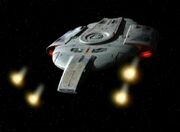
Defiant -class phaser cannons
A total of four phaser cannon assemblies were located in forward-facing locations on board Defiant -class vessels. The cannons were located above and below the nacelle root attachments on the main body on both port and starboard sides of the ship. The plasma conduit ran through the primary phaser coupling, almost doubling the power of the phaser cannons. ( DS9 : " The Search, Part I ", et al. )
These cannons had a much higher damage output compared to standard phasers. ( DS9 : " Defiant ", " Favor the Bold ", " Sacrifice of Angels ", " Tears of the Prophets ")
Phaser emitters
The standard phaser beam emitters aboard Defiant -class vessels served as a secondary supplement to the primary phaser cannon array. The Defiant -class was equipped with at least three emitters: one each forward and aft, as well as one behind the bridge on the dorsal surface. ( DS9 : " Paradise Lost ", " Shattered Mirror ", " The Emperor's New Cloak "; VOY : " Message in a Bottle ") These arrays were included to allow the Defiant to engage multiple targets simultaneously, protect against enemies to the rear, and to allow it to perform strafing runs, all of which could not be accomplished by the forward-facing phaser cannons. ( DS9 : " The Way of the Warrior ", " Rules of Engagement ", " Sacrifice of Angels "; Star Trek: First Contact )
The Defiant -class vessels' deflector arrays could also be refitted into a makeshift phaser emitter, providing one-shot capability in extreme emergency. The phaser emission was generated by the nose/deflector unit. ( DS9 : " Starship Down ")
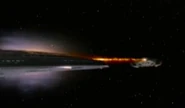
Torpedo launchers
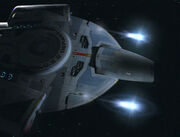
The USS Defiant firing quantum torpedoes
Defiant -class vessels had a total of six torpedo launchers , four forward and two aft. The four forward launchers were located on the hull just ahead of each of the warp nacelles in dorsal and ventral pairs. ( DS9 : " Defiant ", " For the Uniform ") The two aft torpedo launchers were tucked in near the back end of the warp nacelles. ( DS9 : " The Die is Cast ", " Paradise Lost ") These torpedo launchers allowed the ship to fire both quantum torpedoes and photon torpedoes . ( DS9 : " Defiant ", " The Adversary ", etc.)
While it was presumably never intended, the Defiant -class shuttle bay could be converted to allow the ship to lay mines . ( DS9 : " Call to Arms ")
Deflector shields
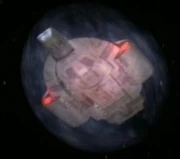
The shields of a Defiant -class
The Defiant -class was equipped with deflector shields .
During the Dominion War , after the destruction of the first USS Defiant , the Federation fleet was modified to be immune to Breen energy-dampening weapon technology. ( DS9 : " The Dogs of War ")
Ablative armor
At least one Defiant -class vessel, the experimental prototype, was equipped with ablative armor . ( DS9 : " The Way of the Warrior ") As late as 2372, Starfleet Operations had not been informed that the Defiant had been so equipped. ( DS9 : " Paradise Lost ")
Cloaking device
A special amendment to the Treaty of Algeron allowed the USS Defiant to be fitted with a Romulan cloaking device. ( DS9 : " The Search, Part I ", " Defiant ")
The Romulans loaned and allowed the limited supervised use of at least one cloaking device. Operation of the cloaking device was to be limited to the Gamma Quadrant and in return, the Federation provided the Romulans any and all intelligence collected in the Gamma Quadrant and about the Dominion . ( DS9 : " The Search, Part I ", " Visionary ") The USS Defiant was the only Federation ship to be seen regularly operating a cloaking device. ( DS9 : " The Search, Part I ")
It is of note that soon after the cloaking device was brought into use, the Dominion developed a way to penetrate the cloak using certain types of antiproton beams . The Defiant was especially vulnerable as the power of the warp engines in relation to the size of the ship led to a high-power signature that wasn't fully masked by the cloaking device. It did, however, at times provide a significant tactical advantage that was exploited on numerous occasions. This issue was later resolved, indicating that a modification was developed to defeat this detection method.
After the Defiant was destroyed by the Breen, her replacement, the former USS Sao Paulo , was not equipped with a new cloaking device. ( DS9 : " The Dogs of War ")
At least one of the Defiant -class vessels operated by Section 31 is equipped with a cloaking device. ( LD : " Crisis Point 2: Paradoxus ")
Interior design

Decks 2, 3, and 1 (left to right)
Due to the militaristic nature of the Defiant -class starship, the interior design was the most spartan in Starfleet. With her role as a warship first and foremost, the Defiant eschewed most of the typical living, recreational and leisure amenities enjoyed on typical Starfleet vessels. The ship possessed no holodecks , no lounges or recreation centers, no arboretums , no accommodations for families or civilians; the ship's mess hall was small and doubled as its sole informal meeting venue.
The Defiant class had four decks.
- Deck 1 : main bridge , captain's ready room , |Transporter Room 1, phaser cannons (2), upper main engineering , plasma exhaust vents, upper sensor array , officer and crew quarters, deuterium storage. ( DS9 : " The Search, Part I ", " Rejoined ", " To the Death ", " Starship Down ", " The Sound of Her Voice ")
- Deck 2 : lower main engineering, main impulse engines , computer core , targeting sensors , mess hall , warp coils , sickbay , medical and science laboratory , Transporter Room 2, officer and crew quarters, warhead control room. ( DS9 : " Defiant ", " The Adversary ", " Nor the Battle to the Strong ", " Starship Down ")
- Deck 3 : main impulse engines, warhead impulse engines, Shuttlebays 1-3, antimatter storage, cargo bays 1-4, airlocks (2), aft torpedo magazine, warp coils, shuttle and cargo management unit maintenance. ( DS9 : " The Ship ", " The Sound of Her Voice ")
- Deck 4 : landing struts , navigational deflector , phaser cannons (2), forward and aft torpedo magazines, aft torpedo launchers (2), forward torpedo launcher (1), lower sensor array, Shuttlebay 1-2 exterior doors and elevator system, main tractor beam emitter. ( DS9 : " Trials and Tribble-ations ", " One Little Ship ")
Doug Drexler based the deck plans in the Star Trek: Deep Space Nine Technical Manual (foldout) on his master systems display , seen in " The Adversary " and many later episodes. A "Deck 5" was mentioned in dialogue three times during the fourth season : in " The Way of the Warrior ", " Rejoined " and " To the Death ". The first two citations were in reference to hull breaches ; the third had Captain Sisko traveling to "Deck 5, Section 1" via turbolift.
Main bridge

The Defiant bridge in early 2371
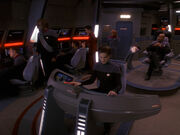
The bridge in 2373, after having undergone a partial redesign later in 2371
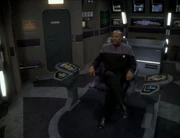
The bridge of the second USS Defiant , featuring different furnishing and a new aft console
The bridge layout of the Defiant was compact, but nonetheless accommodated the familiar engineering , tactical , science, conn , and ops stations.
The main bridge acted as the nerve center of the vessel, and the entire module was sunken into a much larger Deck 1 than on most Federation starships to provide added protection during combat situations. Access to the bridge was provided by two doorways at the back, located on both port and starboard sides. Just forward of the starboard entryway was the location of the ship's dedication plaque , as well as an auxiliary computer access panel.
The port side of the bridge housed the engineering and tactical I stations, while the starboard side featured the science and tactical II consoles. Because of its nearly exclusive role as a combat vessel, stations aboard Defiant -class vessels were designed with speed in mind.
The center of the bridge featured the lone captain's chair , which was on a raised platform and had a clear view of all bridge stations, as well as of the main viewscreen . On both sides of the captain's chair were separate control panels, allowing the occupant access to virtually every system aboard the ship.
Between the command chair and the viewscreen was an integrated flight control and operations panel, capable of performing the joint duties of those stations' larger counterparts on other Federation starships. Like all of the bridge stations on Defiant , the conn had been designed for maximum speed and efficiency of commands input by the operator, allowing the craft to be handled almost like a fighter when under the hands of a skilled pilot.
The engineering station allowed for a direct link to the impulse and warp engines, as well as monitoring of the other various systems vital to the operation of the ship. This single station was capable of mirroring all the readouts and consoles located in main engineering , allowing the chief engineer or another engineering officer to issue commands from the bridge.
Mirroring the engineering station on the port side of the bridge was the science station. Normally occupied by the ship's chief science officer , the panels and readouts on this station allowed direct access to the ship's sensor systems. While the ship was not built for scientific or exploration missions in mind, it was capable of taking high resolution scans of both natural and artificial phenomena, engaging in scientific investigation; this station played a vital role during reconnaissance missions.
Flanking both sides of the viewscreen were two tactical stations, which had primary access to the ship's powerful phaser cannons, torpedo launchers and various other special ordnance packages. Working closely with conn, the officers stationed at these consoles were responsible for firing the various weapons aboard Defiant -class vessels during combat operations. The purpose of the tactical II station was to lighten the load on its sister station, particularly in battle.
Some time after the commission of the Defiant -class in 2371, various aspects of the bridge were redesigned. The captain's chair area was redone to remove the fencing and add new consoles, the dedication plaque was moved to the starboard door area, and additional consoles were added to the side stations and the rear wall. ( DS9 : " Equilibrium ")
Some time in 2373, Starfleet vessels were fitted with new holo-communicator technology. A holographic projector on the bridge could create a holographic simulation of the communique. ( DS9 : " For the Uniform ") This technology was only briefly in service, as it proved inefficient and had minimal advantages compared to communicating via viewscreen.
Medical facilities
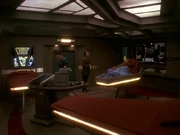
The Defiant sickbay
The main sickbay was located on Deck 2 between the mess deck and science labs. Containing four biobeds , this room served as the primary crew support facility during emergency situations. The room was equipped with limited surgical facilities and was primarily intended merely to stabilize patients until they could be delivered to a nearby friendly Starbase medical facility.
In its limited role as a reconnaissance starship, the Defiant -class was equipped with two dedicated science and medical labs for field testing and investigations. These rooms mirrored their counterparts on larger Federation starships by making use of scaled down devices that could commonly be found on those ships. ( DS9 : " Broken Link ")
Main engineering

Main engineering on a Defiant -class vessel
Main engineering on the Defiant -class was situated on Deck 1 with the lower section on Deck 2. The Master Situation Monitor was located in the starboard wall bulkhead. The warp core was placed on an elevated platform in the center of the compartment, opposite the control consoles. Ships of the Defiant -class were equipped with a class-7 warp drive.
At the end of DS9 Season 5 , the Defiant -class engineering set was deemed to be taking up much-wanted room in the swing set area of the Paramount sound stages used by Star Trek: Deep Space Nine . This resulted in the set for an overhead flying rig – originally built and used for Season 2 installment " Melora " – to be removed from that stage. ( Star Trek: Deep Space Nine Companion , p. 95)
Crew berthing
Overall, crew quarters aboard Defiant -class vessels were the most austere in Starfleet, neither sizeable nor aesthetically laid-out when compared to other ships in the fleet. In keeping with its tactical layout, accommodations were simplistic. Each cabin was equipped with one replicator port and one standard computer terminal.
With emphasis towards the tactical systems being the foremost priority in the vessel designers' minds, crewmembers had to share their quarters with at least one other crewmate during normal times of operation. To this end, standard crew quarters had two stacking bunks fitted into the walls of each cabin. Only the ship's commanding officer was given his own room on Deck 1, which doubled as an informal ready room .
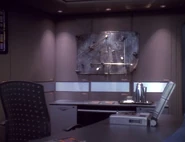
Ships of the Defiant -class lacked any sort of recreational facilities, and the only place for informal gathering were the two mess deck areas located on the port side of Deck 2. Like all the rooms and materials aboard the ship, the mess deck was compact and functional. At the head of the room were three open slots that served as dispensers for the replicators . A counter extended from the underside and was used for the placement of trays, mugs and eating utensils. Seating inside the mess deck was provided by four metallic tables arranged in a semicircle at the wider end of the room. These tables were approximately one meter square, and each had four stools connected to its legs. In addition, the mess deck doubled as a makeshift meeting area that could be used to conduct crew briefings and mission profiles. A tall screen panel located on one of the walls could be used as a visual aid to display tactical graphics. ( DS9 : " Valiant ")
Transporter rooms
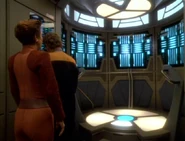
Defiant -class ships were equipped with two transporter compartments, one located on Deck 1 and the other on Deck 2. Again, the compact nature of the Defiant -class meant the transporter pads were much smaller than the sort found on Galaxy -class and Intrepid -class starships and could not accommodate as many people at one time. ( DS9 : " Past Tense, Part I ", " The Die is Cast ", " The Way of the Warrior ")
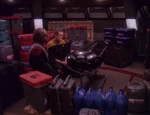
The cargo hold was where the ship's supplies were kept. ( DS9 : " The Ship ")
This location was identified in the episode's script
Ships commissioned
- Unnamed Defiant -class starships
Appearances
- " The Search, Part I "
- " The Search, Part II "
- " Equilibrium "
- " Second Skin "
- " Meridian "
- " Defiant "
- " Past Tense, Part I "
- " Past Tense, Part II "
- " Destiny "
- " Improbable Cause "
- " The Die is Cast "
- " The Adversary "
- " The Way of the Warrior "
- " The Visitor "
- " Rejoined "
- " Starship Down "
- " Our Man Bashir "
- " Paradise Lost "
- " Sons of Mogh "
- " Bar Association "
- " Rules of Engagement "
- " Shattered Mirror "
- " For the Cause "
- " To the Death "
- " Broken Link "
- " The Ship "
- " Nor the Battle to the Strong "
- " Trials and Tribble-ations "
- " The Ascent "
- " The Darkness and the Light "
- " For the Uniform "
- " In Purgatory's Shadow "
- " By Inferno's Light "
- " Soldiers of the Empire "
- " Children of Time "
- " Blaze of Glory "
- " In the Cards "
- " Call to Arms "
- " A Time to Stand "
- " Sons and Daughters "
- " Behind the Lines "
- " Favor the Bold "
- " Sacrifice of Angels "
- " You Are Cordially Invited "
- " The Magnificent Ferengi "
- " Far Beyond the Stars "
- " One Little Ship "
- " Honor Among Thieves "
- " Inquisition "
- " Valiant "
- " Profit and Lace "
- " Time's Orphan "
- " The Sound of Her Voice "
- " Tears of the Prophets "
- " Image in the Sand "
- " Once More Unto the Breach "
- " The Siege of AR-558 "
- " Covenant "
- " It's Only a Paper Moon "
- " Prodigal Daughter "
- " Field of Fire "
- " Chimera "
- " Badda-Bing, Badda-Bang "
- " Penumbra "
- " The Changing Face of Evil "
- " The Dogs of War "
- " What You Leave Behind "
- Star Trek: First Contact
- " Message in a Bottle "
- " Drone " ( LCARS display )
- " The Voyager Conspiracy " ( LCARS display )
- " Endgame "
- ENT : " Shockwave " (digital image)
- " The Next Generation " (display graphic)
- " The Bounty "
- LD : " Crisis Point 2: Paradoxus "
- " Starstruck " (digital image)
- " Mindwalk "
- " Supernova, Part 1 "
- " Supernova, Part 2 "
Background information
According to Ronald D. Moore the Defiant did not have a detachable saucer section . ( AOL chat , 1997 )
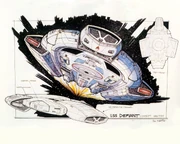
Defiant -class concept art
In the final draft script for "The Search", the physical appearance of the Defiant -class was initially described thus; " The ship should look a little clunky compared to other Federation vessels we've seen – this ship was built primarily for battle, not exploration or science. " [1]
The Defiant -class was designed by James Martin under the direction of Herman Zimmerman and Gary Hutzel .
According to Martin, the initial instruction for the designers was that it was a "beefy runabout." His initial designs based upon this guideline, however, were not accepted by the producers. Martin next turned to more traditional starship designs, but Zimmerman told him that a completely new look was needed, like nothing ever seen on Star Trek before.
Ultimately, Martin went to a design he had done for a Maquis fighter for the episode " The Maquis, Part II ", and he brought it to the producers, who approved it as the basis for the Defiant -class. After tweaking the design a little, Martin gave the schematic to model maker Tony Meininger who, along with his Brazil Fabrications , was given the nod to bring the design to life.
The main problem with the design at that stage was that it didn't look fast enough, so Meininger, a car enthusiast, got some posters of Ferraris and used them to help him design the "streamlined" look of the ship, making it very compact and sleek.
Indeed, Herman Zimmerman has stated that the compact design of the Defiant -class influenced the design of Enterprise NX-01 for Star Trek: Enterprise . He also pointed out, " It was very clear it could not look like NCC-1701-A, B, C, D. It was to be an entirely new ship. " (The USS Defiant , DS9 Season 3 DVD special features; Star Trek: The Magazine Volume 1, Issue 4 ; Star Trek: The Magazine Volume 1, Issue 13 ; Star Trek: Communicator issue 105 )
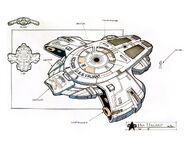
The CGI Defiant , as it appeared in First Contact , was built by Vision Art and rendered by Industrial Light & Magic .
For DS9, a digital model of the Defiant was built by Digital Muse , which was then borrowed by the visual effects artists of Star Trek: Voyager , as and when required. ( Cinefantastique , Vol. 30, No. 9/10, p. 80) A CGI Defiant was also used in DS9's title sequence.
Stock visual effects shots were used for both the prototype USS Defiant and its substitute. ( Star Trek: Deep Space Nine Companion , p. 701)
The studio model of the Defiant , measuring 37" × 27", was sold at the 40 Years of Star Trek: The Collection auction on 6 October 2006 for US$85,000 (US$102,000 with buyer's premium). [2] (X) Additionally, several white foam core camera test models were sold on It's A Wrap! sale and auction , selling at prices ranging from US$27.00 to US$384.00. [3] (X) Several pieces of Martin's revised sketches of the Defiant , dated 24 November 1994 , were also sold on It's A Wrap! , for US$502.00. [4] (X)
According to Hutzel, during the early development stages of the ship, the Defiant was to be " a new hot battleship that would really set a new standard for an action ship in the series. First, there was lots of talk like 'How big is the Defiant ?' Well, we'll make it really small and really powerful, that it would be so powerful and scary, nobody would mess with it ." (USS Defiant , DS9 Season 3 DVD special features)
According to Doug Drexler , " The size of the Defiant was a hot potato from day one. Rick Berman wanted a small pocket battleship (a couple times longer than a runabout, with the girth of a regular starship), Gary wanted at least 500' [152.4 m]. " [5] (X)
The scale of the CGI mesh, according to a post in the newsgroup nntp://alt.tv.star-trek.ds9 , by DS9 Visual Effects Supervisor David Stipes , was 560 feet (170.7 meters), the length used when he blocked shots in DS9. This was also the size established in the Star Trek: Deep Space Nine Technical Manual (p. 153).
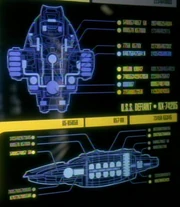
MSD depicting early design for the Defiant -class
The original MSD that appeared in " The Search, Part I " actually depicted an early concept design and did not represent the final iteration. was later replaced with an accurate MSD in such episodes as " Shattered Mirror ", although it was used on displays until the end of Deep Space Nine . Drexler, who was responsible for creating the ship's MSD, rationalized "a 420′ [128.0 m] Defiant ." [6] (X)
For further analysis on the Defiant 's scaling, visit the " Defiant Problems" link at Ex Astris Scientia below.
Designation
Initial drawings described the class as the Valiant -class. Indeed, Drexler even constructed an initial dedication plaque for the Defiant that referred to it as the " Valiant -class," before a new plaque was recreated that simply stated, "the first ship of her class." The plaque was later given to Rob Bonchune . [7] Bruce Branit also once referred to the class as "the Valiant -class." ( Cinefantastique , Vol. 30, No. 9/10, p. 64)
The interior sets of the Defiant were supervised by Herman Zimmerman. ( citation needed • edit )
According to regular background performer Brian Demonbreun , there were special carpets transferred onto the "normally" seen carpet of the Defiant in scenes including explosions and sparks. All actors, mostly the background performers, who were near those sparks were made wet, with a light moisture film on their hair and uniform. ( citation needed • edit )
When it came time to film DS9 Season 3 premiere " The Search, Part I ", the relatively small set used as the Defiant challenged the production crew, who had transferred to DS9 from TNG. ( Captains' Logs Supplemental - The Unauthorized Guide to the New Trek Voyages , p. 82) They began to find design flaws as soon as they started filming on the new set. " Initially, it was very hard to shoot in the Defiant set, " confirmed Director Kim Friedman . ( Star Trek: Deep Space Nine Companion , p. 163) David Livingston added that this was " because we hadn't been in there a lot, and it's cramped; any time you shake the camera or move the camera it takes a lot more time. " ( Captains' Logs Supplemental - The Unauthorized Guide to the New Trek Voyages , p. 82) With the floor of the Defiant 's bridge including a central raised platform under the command chair and a frontal raised platform beneath the helmsman's station, the filming workers discovered the bridge, whose layout was permanent, didn't allow for sufficient room to lay a dolly track, which restricted the camera movements. The tight physical restrictions influenced Friedman to watch old World War II films involving "people sitting in cockpits," in an effort to increase her familiarity with methods employed when shooting in constrained places. Another issue was that, since the cloaking device was initially only meant to be used during the "The Search" two-parter, the set was not made with variable lighting; all the light bulbs had to be manually changed (by stopping filming) whenever the cloak was used. When the cloak was kept, this made filming nightmarish and reshoots an exercise in hurry up and wait. Subsequent alterations to the Defiant bridge set made it a lot easier to film in. ( Star Trek: Deep Space Nine Companion , p. 163)
DS9 Season 3 finale " The Adversary " introduced a Defiant -class engine room and mess hall, which were created as standing sets. " What we did is we amortized the set costs in our amortization account since they're permanent sets, " explained David Livingston . Ronald D. Moore was highly pleased with the addition of the new sets. ( Captains' Logs Supplemental - The Unauthorized Guide to the New Trek Voyages , p. 99)
The same sets were used for both the Defiant and the Valiant . ( Star Trek: Deep Space Nine Companion , p. 572) However, these interiors were intentionally not used for the USS Bellerophon in DS9 : " Inter Arma Enim Silent Leges " (which instead became an Intrepid -class ship, permitting the use of the standing sets for Star Trek: Voyager ). " We could have reused the Defiant sets once again [as in " Valiant "], saying the Bellerophon was a Defiant -class ship, but I didn't want to, " Ron Moore recalled. ( Star Trek: Deep Space Nine Companion , p. 662) Elaborating on why he opted not to reuse the Defiant -class sets for the Bellerophon , Moore critiqued, " It's always a little bit of a push with the audience when you are doing that, because they know what you are doing. They know you are just using the same sets again, and it gets a little boring. " ( Cinefantastique , Vol. 32, Nos. 4/5, p. 76)
Technical Manual
The Nova -class was later designed based on the configuration of the Defiant "Pathfinder" vehicle, registry NXP-2365WP/T, included in the Star Trek: Deep Space Nine Technical Manual . [8] (X)
The following details and specifications come from the Star Trek: Deep Space Nine Technical Manual (p. 153):
Specifications
- Production Base: ASDB Integration Facility, Antares Fleet Yards, Antares IV
- Type: Escort
- Accommodation: 40 officers and crew; 150 personal evacuation limit
- Power Plant: One 1,500 plus Cochrane warp core feeding two nacelles; two impulse modules
- Dimensions: Length, 170.68 meters; beam, 134.11 meters; height: 30.1 meters
- Mass: 355,000 metric tons
- Performance: Warp 9.982 for 12 hours
- Armament: Four pulse phaser cannons ; two torpedo launchers
The notched forward hull containing the vessel's navigational deflector and main sensors was a detachable single-use last-resort missile. This missile was equipped with a small impulse engine and a magazine with six torpedo warheads. These torpedo warheads were part of the ship's auto-destruct system and under more normal circumstances could be fired from the forward launcher. Any torpedo warheads left in the magazine would become the missile's warhead upon the missile's separation from the rest of the ship. If no torpedo warheads remained, then the missile would have to rely on kinetic energy alone. The ship would be unable to travel at high warp speeds without the missile since the latter contained the ship's navigational deflector. ( Star Trek: Deep Space Nine Technical Manual , pp. 132, 134)
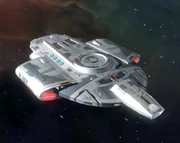
The Defiant -class in Star Trek: Legacy
During the mission "Ambush" in the game Star Trek: Legacy , the USS Defiant was sent to the Etarian Nebula for a test flight of its systems, where the crew found that the Romulans had invaded the nebula waiting for a fugitive. The USS Enterprise -D was sent to rescue the Defiant with three other starships and to neutralize any Romulan threat remaining.
The William Shatner series of novels featured another Defiant -class vessel, the USS Monitor ( β ). The Monitor boasted several modifications from a standard Defiant -class starship, such a cloaking device and black sensor reflective hull plating. Its warp engines were tuned so the nacelles would emit ultraviolet light instead of the standard red and blue, and the ship had no running lights or hull markings. In Shatner's novel The Return , the Monitor is temporarily renamed Enterprise during a mission to the Borg homeworld using a stolen transwarp drive , commanded by Captains Kirk , Picard , and Spock .
The Decipher role-playing supplement Starships lists many other conjectural vessels of this class including the USS Gallant ( β ) (NCC-74206), USS Incessant ( β ) (NCC-75636), USS Redoubtable ( β ) (NCC-75634), and USS Stalwart ( β ) (NCC-75635).
Star Trek Online has Defiant -class vessels available for characters who reach Captain rank or higher as a Tier 4 "Tactical" Escort or Tier 5 "Tactical Escort Retrofit" (the difference being that the Tier 5 variants come equipped with cloaking devices). Other Tier 4 escorts are meant as late 24th and early 25th descendants of the Defiant class, sharing its basic profile – these include the Vigilant ( β ) class and Gallant ( β ) class Tactical Escorts. It also has a refit version called the Sao Paulo -class ( β ) "Tactical Escort Refit" with quad phaser cannons. The game features two NPC Defiant -class starships, the USS Defiant and the USS Belfast ( β ).
In both Star Trek: Armada and Star Trek: Armada II the ship, in particular the Avenger , carries antimatter mines .
A Defiant -class starship appeared as an escort in the video game Star Trek: The Next Generation - Birth of the Federation .
The Defiant -class is playable in multiplayer and skirmish modes in the PC and Xbox 360 video game Star Trek: Legacy .
Star Trek: Armada II features the following possible names for Defiant -class starships:
External links
- Defiant class at Memory Beta , the wiki for licensed Star Trek works
- Defiant class starship at Wikipedia
- Defiant Problems at Ex Astris Scientia : a comprehensive look at the scaling issues of the Defiant -class
- Jim Martin Interview; Designing the USS Defiant (X) - an article by Jim Martin taken from the Star Trek: The Magazine Volume 1, Issue 4 ( August 1999 ) and Star Trek: The Magazine Volume 1, Issue 13 ( May 2000 )
- USS Defiant at Cygnus-X1.net , the Star Trek LCARS Blueprints Database
- Designing the Defiant at StarTrek.com
- 3 Dos Cerritos (episode)

COMMENTS
There are two different types of starship weapons: Energy Weapons and Kinetic Weapons. Energy Weapons do equal damage to both a starship's shields and hull. Kinetic Weapons do full damage to a starship's hull but shields have an innate 75% resistance to kinetic weapons, though some types of...
The Star Trek fictional universe contains a variety of weapons, ranging from missiles (the classic photon torpedo) to melee (primarily used by the Klingons, a race of aliens in the Star Trek universe).
Phasers, short for Phased Energy Rectification Device, are easily the most commonly used weapons throughout the known galaxy. Variations of the Phaser are installed on warships of all major races in the galaxy. Though there are variations, all Phasers can be grouped into four types.
Starship weapons are the most important items in the game, second only to bridge officers in their utility and their use by players. In this list, we’ll be going over the top ten best weapon types that you can use, why they’re useful, and how to get them!
Existing and future threat force conflicts drove the development of a new defensive standoff weapon that could be deployed on specially equipped starships, starbases, and planetary-surface fortifications.
Phasers were the most common and standard directed energy weapon in the arsenal of Starfleet and several other powers.
In order to protect crews from the dangers of natural phenomena and hostile alien races and cultures alike, many starships are equipped with weapons of some sort, mounted directly onto the ships. Starship weapons were often a form of gun or torpedo.
Experimental Weapons (previously known as Heavy or Heavy Escort Weapons) are a type of starship equipment which can be equipped on certain starships that have an Experimental Weapon slot. Most ships do not have an Experimental Weapon slot.
List of starships by weapon hardpoints. This page lists Tier 6 starships by the number of weapon slots they possess.
The Defiant-class battleship, officially an escort vessel, began development in 2366 as a small, highly powered, heavily armed warship intended to defend the United Federation of Planets against the Borg. The USS Defiant (NX-74205) was the prototype of what was to be a new Federation battle fleet.